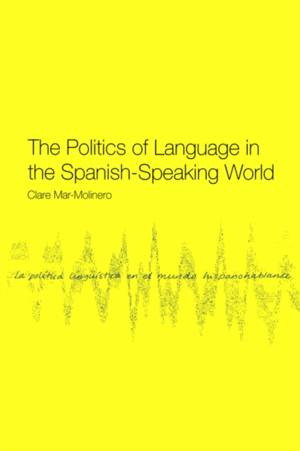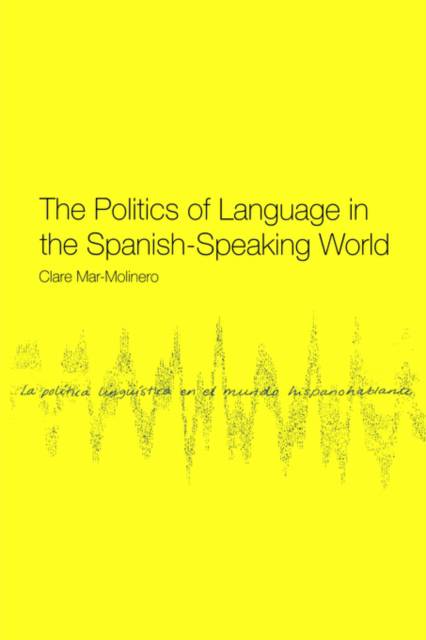
- Afhalen na 1 uur in een winkel met voorraad
- Gratis thuislevering in België vanaf € 30
- Ruim aanbod met 7 miljoen producten
- Afhalen na 1 uur in een winkel met voorraad
- Gratis thuislevering in België vanaf € 30
- Ruim aanbod met 7 miljoen producten
Zoeken
The Politics of Language in the Spanish-Speaking World
From Colonization to Globalization
Clare Mar-Molinero
€ 97,95
+ 195 punten
Uitvoering
Omschrijving
Spanish is now the third most widely spoken language in the world after English and Chinese. This book traces how and why Spanish has arrived at this position, examining its role in the diverse societies where it is spoken from Europe to the Americas. Providing a comprehensive survey of language issues in the Spanish-speaking world, the book outlines the historical roots of the emergence of Spanish or Castilian as the dominant language, analyzes the situation of minority language groups, and traces the role of Spanish and its colonial heritage in Latin America. The book is structured in four sections: Spanish as a national language: conflict and hegemony Legislation and the realities of linguistic diversity Language and education The future of Spanish. Throughout the book Clare Mar-Molinero asks probing questions such as: How does language relate to power? What is its link with identity? What is the role of language in nation-building? Who decides how language is taught?
Specificaties
Betrokkenen
- Auteur(s):
- Uitgeverij:
Inhoud
- Aantal bladzijden:
- 260
- Taal:
- Engels
- Reeks:
Eigenschappen
- Productcode (EAN):
- 9780415156554
- Verschijningsdatum:
- 25/05/2000
- Uitvoering:
- Paperback
- Formaat:
- Trade paperback (VS)
- Afmetingen:
- 158 mm x 235 mm
- Gewicht:
- 399 g

Alleen bij Standaard Boekhandel
+ 195 punten op je klantenkaart van Standaard Boekhandel
Beoordelingen
We publiceren alleen reviews die voldoen aan de voorwaarden voor reviews. Bekijk onze voorwaarden voor reviews.











